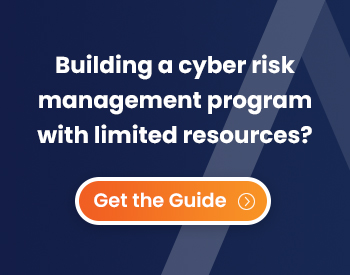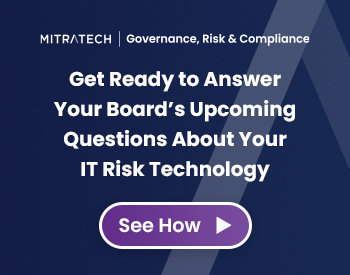‘Tis the season for better cyber hygiene: navigating IT risk management in 2024
Prepare your organization to stay one step ahead in the ongoing battle against cyber and IT risk management.
As organizations increasingly leverage third-party services and cloud technologies, cybercriminals are becoming more adept at exploiting vulnerabilities, leading to a surge in cyberattacks. In fact, a study conducted by the University of Maryland found that a threat actor targets a business’s cybersecurity infrastructure every 39 seconds on average.
In response, regulatory bodies are tightening their grip, necessitating a proactive and transparent approach to IT risk management. But what does that approach look like, and how can companies stay compliant (and ready to answer any stakeholders’ questions)?
Cybersecurity & IT risk management regulations continue to develop worldwide
Most regions have privacy and security laws in place (such as the EU’s GDPR, or the UK’s DPA, to name a few) for the purpose of shaping cybersecurity regulations. And with a rise of digital nomadism in the workforce and third-party reliance as new regulatory requirements emerge, keeping on top of these shifts — in every region where you operate with a certain number of employees— will necessitate an effective, comprehensive IT risk management strategy.
Take the U.S. Securities and Exchange Commission (SEC), for example. Recognizing the growing threat of cyber incidents, the SEC introduced a groundbreaking cyber disclosure rule in 2023. According to this rule, public companies operating in the United States are now mandated to report material incidents within four business days of discovery. Additionally, annual disclosures are required to shed light on cybersecurity risk management, strategy, and governance.
The SEC’s proposed rules delve into specific aspects, emphasizing the importance of disclosure surrounding material incidents, periodic updates on previously reported events, and the intricacies of a registrant’s policies and procedures to identify and manage cybersecurity risks. Furthermore, the proposed rules shed light on the board of directors’ oversight, management’s role in assessing and managing cybersecurity risks, and annual reporting on the board’s cybersecurity expertise.
And don’t forget: businesses today may have transitioned from on-site server rooms to third-parties, cloud providers, etc, but outsourcing services does not outsource the risk. As your network grows, you are responsible for ensuring your vendors, partners, and other third parties are complying with your internal policies and procedures — a task that is becoming increasingly difficult in today’s cyber environment.
Crafting a robust IT risk management framework
In this dynamic regulatory environment, organizations must proactively address cybersecurity challenges by crafting a robust IT risk management framework. This involves not only complying with specific regulations (like the SEC’s cyber disclosure rule) but also having the resources in place to evidence that compliance and answer any stakeholder questions that come your way about your IT risk management program.
An effective IT risk management strategy involves continuous monitoring, updated policies and procedures, and holistic visibility. By adopting a proactive stance, organizations can navigate the ever-changing regulatory landscape, safeguard their assets, and build resilience against the evolving tactics of cybercriminals.
Your board is poised to become more involved than ever in understanding and overseeing your IT risk technology — and they’re going to start asking more questions. Equip yourself with the knowledge and tools needed to confidently address your stakeholder’s inquiries and stay one step ahead in the ever-changing realm of IT risk oversight with our latest ebook.





